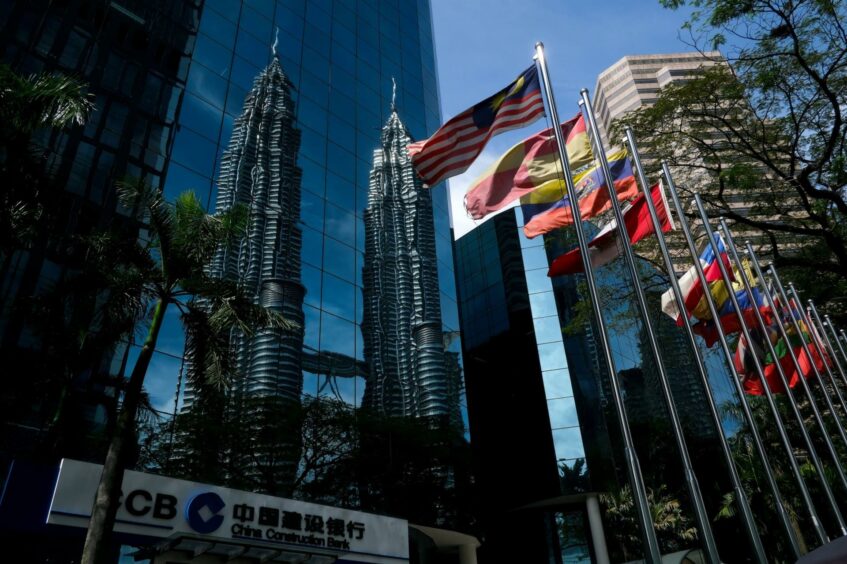
Petronas has taken a final investment decision (FID) for the development of its giant Kasawari carbon capture and storage (CCS) project offshore Sarawak in Malaysia. Significantly, it will be one of the first large scale CCS schemes in Southeast Asia and takes Malaysia closer to its goal of becoming a regional hub for carbon storage solutions.
The Kasawari CCS development, expected to start up by 2026, has the potential to open up many more opportunities in the prolific waters offshore Malaysia for future carbon capture utilisation and storage (CCUS) ventures, Sohini Chatterjee, a CCUS and global upstream analyst at consultancy Rystad Energy, told Energy Voice. “Many companies including energy major Shell, as well as Japanese and South Korean players, have been seen forming partnerships with Petronas for further CCUS ventures in the Sarawak basin,” she added.
Petronas Carigali announced on Tuesday that it had approved final investment on 20 October 2022, followed by the award of the engineering, procurement, construction, installation and commissioning (EPCIC) contract for the project to Malaysia Marine and Heavy Engineering (MMHE) on 3 November.
“The CCS project, located in Block SK316 about 200 kilometres off Bintulu, is expected to reduce carbon dioxide (CO2) volume emitted via flaring by 3.3 MtCO2e annually, making it one of the largest offshore CCS projects in the world,” noted Petronas.
By comparison, Chevron’s giant Gorgon CCS project in Australia has a planned CO2 injection rate of 3.5 million to 4 million tonnes per year.
“Petronas are looking to address the significant CO2 emissions related to the Kasawari upstream project, showing proactive leadership and developing CCS infrastructure that could have potential to be used by third parties,” Robert Chambers, an Asia Pacific upstream analyst previously told Energy Voice.
However, “whilst Kasawari CCS is similar in scale to Chevron’s Gorgon project, the emissions intensity of the LNG produced (via the MLNG complex at Bintulu) will still be higher as about 25-30% of the raw CO2 in Kasawari will be removed at MLNG, where there are no plans for CCS,” added Chambers.
“The FID marks a crucial stage in the progress of CCS solutions. This project is expected to become the catalyst in achieving end-to-end CCS capability development within Petronas and the first step in unlocking Malaysia’s potential as a regional CCS solutions hub,” said Petronas Carigali’s CEO Hasliza Othman.
The Malaysian government and state-backed Petronas have made commitments to cut greenhouse gas emissions. However, these goals become particularly challenging when many undeveloped fields with high levels of carbon dioxide (CO2) and hydrogen sulfide need to be tapped to backfill Malaysia’s LNG export complex in the coming years.
If emissions from these high CO2 fields are to be managed, then carbon capture and storage (CCS) will be a key enabler, according to IHS Markit. But it remains to be seen if the economics stack up and whether Malaysia can remain attractive in the context of a global upstream portfolio, as Energy Voice reported previously.
Still, in October, Malaysia announced the introduction of a raft of tax incentives for CCS as the country aims to become a regional hub for the nascent sector.
Indeed, Petronas appears to be taking the lead in CCS within Southeast Asia. Underscoring the progress in Malaysia, Petronas in June announced the establishment of a new clean energy solutions company, Gentari, as part of a global push by the state-backed energy firm to produce carbon-free energy. Petronas has also signed numerous MoUs covering the downstream industry and value chain for CCS-CCUS, particularly with Japanese players.
Last year Petronas announced a strategic plan for CCS across depleted gas fields in Malaysia with a total 46 trillion cubic feet of storage volume identified. There is even bigger potential to expand this volume if aquifers and depleted oil fields are considered. Moreover, the NOC has stated its ambitions to make Malaysia a regional carbon storage hub.
Recommended for you

